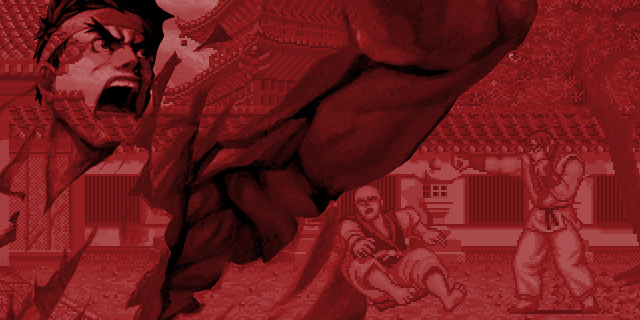
In From Pixels to Polygons, we examine classic game franchises that have survived the long transition from the 8- or 16-bit era to the current console generation.
When Street Fighter II was released in 1991, the game took the world by storm. This would be Capcom’s most successful title ever, sparking many other companies to create rival games throughout the years, and leaving Capcom with the unenviable task of following up on an instant classic.
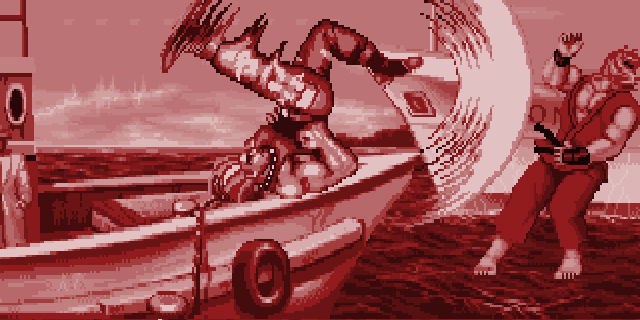
Harder, better, faster, stronger
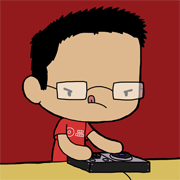 It sounds odd, but the Street Fighter series didn’t get immensely popular until its second game. Even to this day, the first Street Fighter game (known as Fighting Street on some consoles and in some regions) is probably the most overlooked game in the entire series. In Street Fighter, you take control of Ryu, a martial artist from Japan who participates in a fighting tournament against participants from all around the world to prove his strength. Situationally, players can play the game as Ryu’s American training partner, Ken, if a versus match is triggered and the second player wins the match and continues through the single-player game. The only differences between the two were aesthetic.
It sounds odd, but the Street Fighter series didn’t get immensely popular until its second game. Even to this day, the first Street Fighter game (known as Fighting Street on some consoles and in some regions) is probably the most overlooked game in the entire series. In Street Fighter, you take control of Ryu, a martial artist from Japan who participates in a fighting tournament against participants from all around the world to prove his strength. Situationally, players can play the game as Ryu’s American training partner, Ken, if a versus match is triggered and the second player wins the match and continues through the single-player game. The only differences between the two were aesthetic.
Depending on which country is chosen, the fight path will be laid out a little differently. Eventually, your battles would take you to Thailand and you would fight two masters of Muay Thai for the championship. One major difference in this version is how powerful the special attacks are. Unlike the games that would come after it, players were forced to enter the commands very precisely. If the attack landed, the player would deal a significant amount of damage to the opponent, leading to a faster knock out. Even today, this game goes unnoticed and forgotten about. Probably for good reason, too.
Infamously, Street Fighter II was known for its multiple releases under slightly different titles. There were four major releases in the arcade that eventually made its way to various major consoles. Capcom released Championship Edition in 1992, which balanced the character roster, as well as allowed mirror matches and made the four Grand Master boss characters playable characters. Hyper Fighting (known as Turbo on the SNES and Special Champion Edition on the Genesis) was released late in 1992. This added new special moves to almost the entire cast (with the exception of Guile and the Grand Masters), as well as additional palette options. Most importantly, the addition of turbo mode significantly sped up gameplay, and required players to time their inputs more precisely to match the speed of the action.
Super Street Fighter II: The New Challengers, released in 1993, brought the usual balance changes to the table, but also gave the game a much-needed graphical overhaul, as well as four more characters. The turbo option was removed from this game, but would return in 1994’s Super Street Fighter II Turbo. This introduced Super Combos and the ability to juggle opponents using air combos. This game also introduced Akuma as a playable character (by inputting a secret code). This version is the basis for the HD Remix remake in 2008. – Eric Albuen
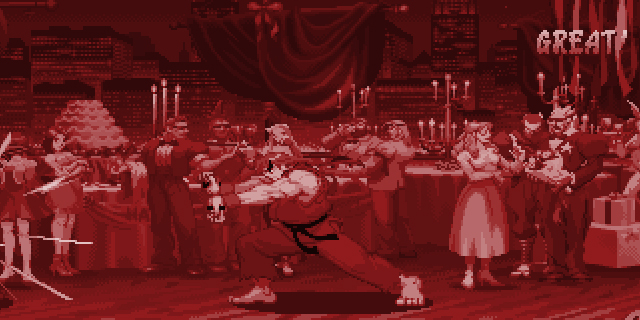
A fight for the future
 With the runaway success of Street Fighter II and its many variants, it seemed like a logical choice for Capcom to finally deliver an actual sequel, and boy did they ever, as the mid to late ’90s were rife with Street Fighter titles. The Alpha series came rushing out of the gate in 1995, and rejuvenated the franchise with its new mechanics: multi-tiered super bars, custom combos, air blocking and fall breaking, to name a few. Set before the events of Street Fighter II, a lot of familiar faces from both the first and second games make a playable appearance. The original Alpha was also the first Street Fighter to feature characters from the game Final Fight, a trend that would continue into today’s titles. The new sprites were a breath of fresh air for series stalwarts, although in no time flat those sprites were exported to various other games including the highly acclaimed Vs. series. The Vs. games themselves were not always implicitly Street Fighter games, but still account for an important section of Street Fighter’s history, setting up new ideas such as tag battles.
With the runaway success of Street Fighter II and its many variants, it seemed like a logical choice for Capcom to finally deliver an actual sequel, and boy did they ever, as the mid to late ’90s were rife with Street Fighter titles. The Alpha series came rushing out of the gate in 1995, and rejuvenated the franchise with its new mechanics: multi-tiered super bars, custom combos, air blocking and fall breaking, to name a few. Set before the events of Street Fighter II, a lot of familiar faces from both the first and second games make a playable appearance. The original Alpha was also the first Street Fighter to feature characters from the game Final Fight, a trend that would continue into today’s titles. The new sprites were a breath of fresh air for series stalwarts, although in no time flat those sprites were exported to various other games including the highly acclaimed Vs. series. The Vs. games themselves were not always implicitly Street Fighter games, but still account for an important section of Street Fighter’s history, setting up new ideas such as tag battles.
Another, often forgotten title that came out around this time was Street Fighter EX, the first game in the franchise to feature polygonal characters. Mechanics added to this series include super cancels (canceling the animation of one super to begin another) and guard breaks. Developed by Arika, the game had its share of outlandish characters that were never to be seen in a Street Fighter title again, due in no small part to the fact that Arika owned many of the original characters. It’s definitely a bizarre one and the black sheep of the franchise, and that’s saying something when Street Fighter III exists.
Produced on the CP System III, Street Fighter III was a great-looking game featuring smooth animation and sprites that truly came alive. The team decided to do away with a large portion of Street Fighter’s past stable in favor of a “new generation” of characters (Originally only Ken and Ryu remained; eventually they added Akuma and Chun-Li back in.) The mechanics introduced were some of the series’ finest. The parry system and EX attacks opened up new ways to get in on offense or defense. It was also the first Street Fighter game to allow players to choose their super moves out of a list of several before the match. This was to be the last major Street Fighter output for nearly 10 years. – Grant Potter
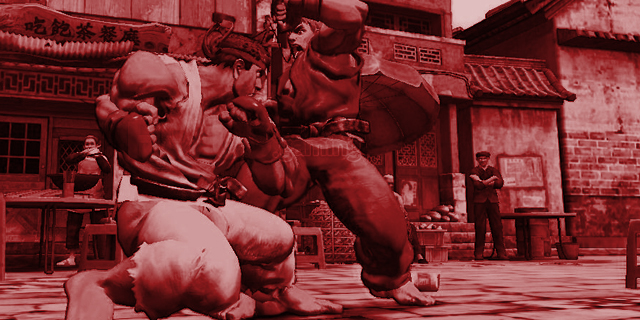
A revolution reborn
 Street Fighter IV exploded onto the scene in a big way, turning the series away from the unnecessary complications that previously drowned the genre. Capcom designed the game to be much more accessible to new players, and did so without dumbing down the game for the hardcore. The mechanics were simplified to more closely resemble Street Fighter II, and a new ability, the focus attack, was added as a much more malleable alternative to parries in Street Fighter III. Input shortcuts were added as well, throwing just enough of a bone to new players to ease them into the world of fighting game controls. SFIV also turned up the dial on presentation, adopting a sleek new 2.5D style. The traditional gameplay transitioned to polygons perfectly, and the added cinematic flair (especially for the new ultra moves) made pulling off combos and big finishes more exciting than ever before. Since Street Fighter IV, we have yet to encounter a fighter using 3D graphics with as much animation and personality.
Street Fighter IV exploded onto the scene in a big way, turning the series away from the unnecessary complications that previously drowned the genre. Capcom designed the game to be much more accessible to new players, and did so without dumbing down the game for the hardcore. The mechanics were simplified to more closely resemble Street Fighter II, and a new ability, the focus attack, was added as a much more malleable alternative to parries in Street Fighter III. Input shortcuts were added as well, throwing just enough of a bone to new players to ease them into the world of fighting game controls. SFIV also turned up the dial on presentation, adopting a sleek new 2.5D style. The traditional gameplay transitioned to polygons perfectly, and the added cinematic flair (especially for the new ultra moves) made pulling off combos and big finishes more exciting than ever before. Since Street Fighter IV, we have yet to encounter a fighter using 3D graphics with as much animation and personality.
The fighting game community embraced it, and with the addition of so many new players and fan,s the scene has grown to crazy heights. Capcom has maintained a huge community presence, and the scene has flourished. Tournaments are held worldwide, and the top players have even been rewarded with sponsorships from companies like MadCatz. Gaming streams took off because of fighting game tournaments. Thanks to SFIV, eSports will continue to grow.
With the success of SFIV and its huge, dedicated playerbase, the demand for fixes and additions rose. Capcom responded with Super Street Fighter IV, one of the biggest upgrades in genre history. The roster grew to over 30 characters, more stages and character-specific music was added, and the usual tweaks were made as Capcom did its best to achieve as much balance as possible. Two updates followed: Arcade Edition and AE 2012. These updates made use of the DLC capabilities of modern games, allowing Capcom to make smaller updates to the game without making unneeded retail releases. – Lucas White
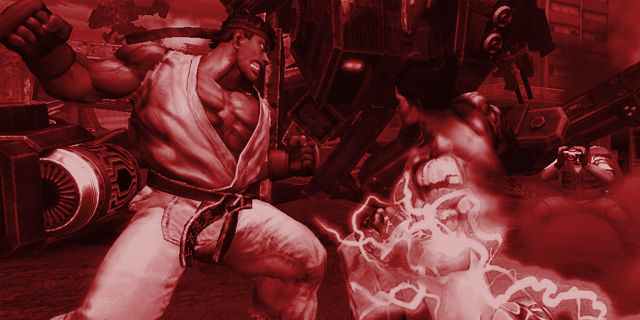
Where do we go from here?

It’s definitely not like how it was back then when Capcom had to release completely new games just to release patches and add a couple of new features (even though they still kind of do that now). But in a time when the Internet is giving everyone a chance to provide input for a game across Capcom’s official channels, the influence for how a game can be shaped brings this series and other fighters to a level that we’ve never seen before. As far as the Street Fighter IV series goes, Capcom can go in several directions: introduce a 2013 patch that addresses gameplay issues introduced in last year’s major patch and leave it at that, patch and and add characters to bring some new and old faces to the already-large group of fighter or start making plans for Street Fighter V (but I don’t see that happening anytime soon).
Capcom does have a lot of things to consider for its next game though. While the slower-paced fighting of IV brought in several new players, and made it a lot more accessible to fighter others with the help of online play, many feel that it completely cut off the community that loved the prior games. How do we return to the fast-paced action and fluidity of the sprite-based games, while continuing to evolve on the 2.5D that Street Fighter IV introduced? With high-level players providing input to the developers, I’m sure the team can find that balance and unite old and new players alike to provide a Street Fighter experience for the ages. – Eric Albuen
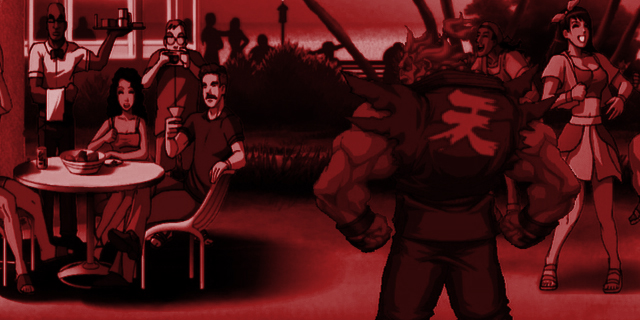
What’s the peak of the Street Fighter series?
 Eric: I’ve been a fan of almost every Street Fighter game to date. To this day, I still play a lot of III and IV in the arcades. However, I have to say that Super Street Fighter II Turbo is still the best in the series. This one in particular finally brought the whole series together, and gave players a definitive Street Fighter II experience they could play for years. Every time I decide to drop a quarter on this game, I’m reminded of how far this series has come and how bad I am at this particular version.
Eric: I’ve been a fan of almost every Street Fighter game to date. To this day, I still play a lot of III and IV in the arcades. However, I have to say that Super Street Fighter II Turbo is still the best in the series. This one in particular finally brought the whole series together, and gave players a definitive Street Fighter II experience they could play for years. Every time I decide to drop a quarter on this game, I’m reminded of how far this series has come and how bad I am at this particular version.
 Grant Potter: You’d figure this would be a tough pick for me, as each Street Fighter is legendary in its own way, but there can be only a single pinnacle, and for me that peak was Street Fighter III. The game practically encapsulated my best memories of the ’90s. The crazy characters, the wild music, the vivid colors and, most importantly, the tight gameplay continue to impress me today.
Grant Potter: You’d figure this would be a tough pick for me, as each Street Fighter is legendary in its own way, but there can be only a single pinnacle, and for me that peak was Street Fighter III. The game practically encapsulated my best memories of the ’90s. The crazy characters, the wild music, the vivid colors and, most importantly, the tight gameplay continue to impress me today.
 Lucas: It isn’t much of a surprise that I’m a big fan of Street Fighter IV. The roster is huge, making concessions for both the die-hard SFII fans as well of the fans of the more interesting characters from later entries. The level of polish both in look and feel is astounding. Thanks to the input shortcuts, I can play with anyone on any type of controller and not feel handicapped. Capcom really outdid itself with Street Fighter IV, and the subsequent return of fighting games to the spotlight after its release is evidence enough.
Lucas: It isn’t much of a surprise that I’m a big fan of Street Fighter IV. The roster is huge, making concessions for both the die-hard SFII fans as well of the fans of the more interesting characters from later entries. The level of polish both in look and feel is astounding. Thanks to the input shortcuts, I can play with anyone on any type of controller and not feel handicapped. Capcom really outdid itself with Street Fighter IV, and the subsequent return of fighting games to the spotlight after its release is evidence enough.
In our next installment, we’re heading to Hyrule and looking at The Legend of Zelda. For more, check out the archive.



















